Abstract
As previously reported, mice infected with encephalomyocarditis (EMC) virus progressively develop a state of hyporeactivity to interferon induction as evidenced by an 80% reduction in serum interferon levels produced in response to four different inducers administered 96 h after initiation of infection. In the current report, this hyporesponsiveness was further documented in vitro in peritoneal exudate cells harvested at the time of maximal hyporeactivity (96 h) during EMC virus infection. These peritoneal cell preparations (containing no detectable interferon or virus) produced significantly less interferon than cells from uninfected mice following exposure to Newcastle disease virus or Chikungunya virus. More importantly, hyporeactivity could be transferred to normal peritoneal cells incubated in serum (containing no detectable interferon or virus) from EMC virus-infected mice during the hyporeactive period. Incubation of peritoneal exudate cells with up to a 1:200 dilution of serum from hyporeactive animals still resulted in a significant reduction in the interferon response induced by Newcastle disease virus or Chikungunya virus. Furthermore, it could be shown that this serum hyporeactive factor was effective in mouse cells but not in rabbit, chicken, or human cells.
Full text
PDF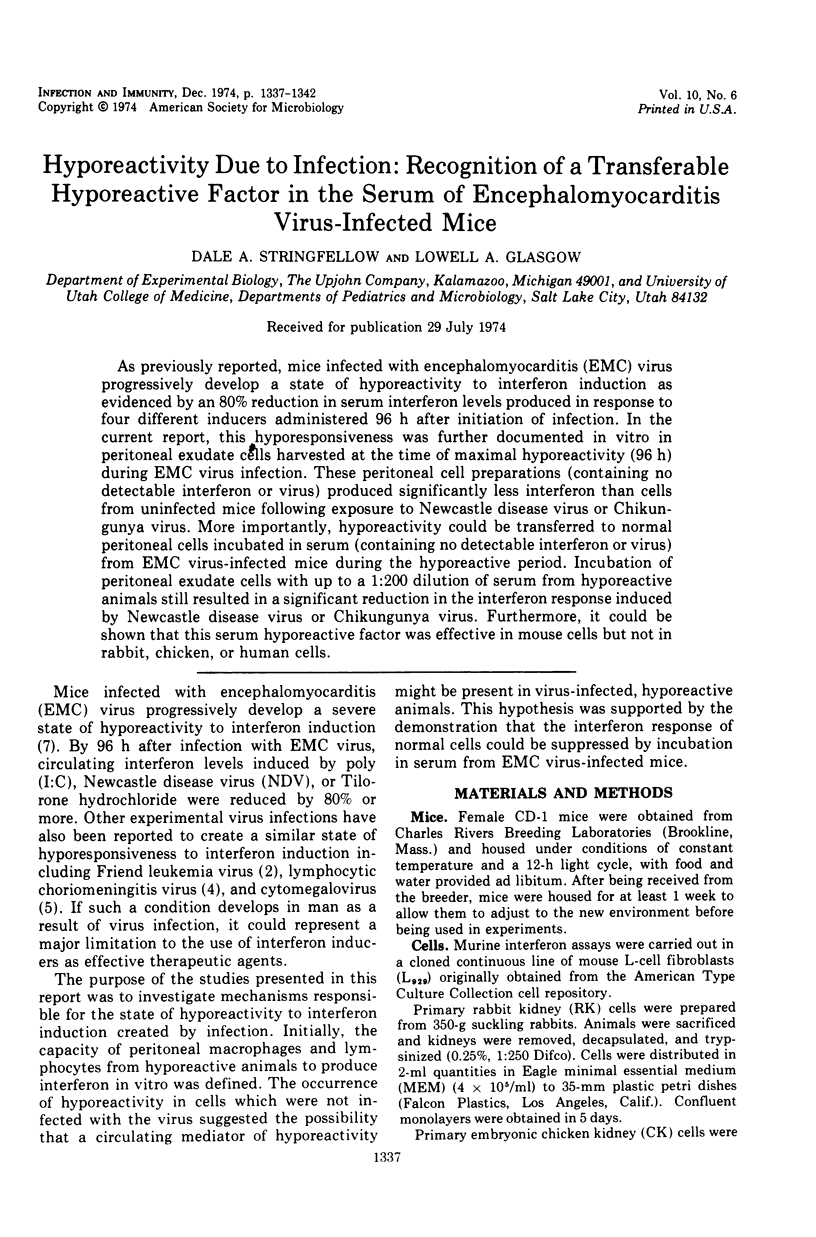

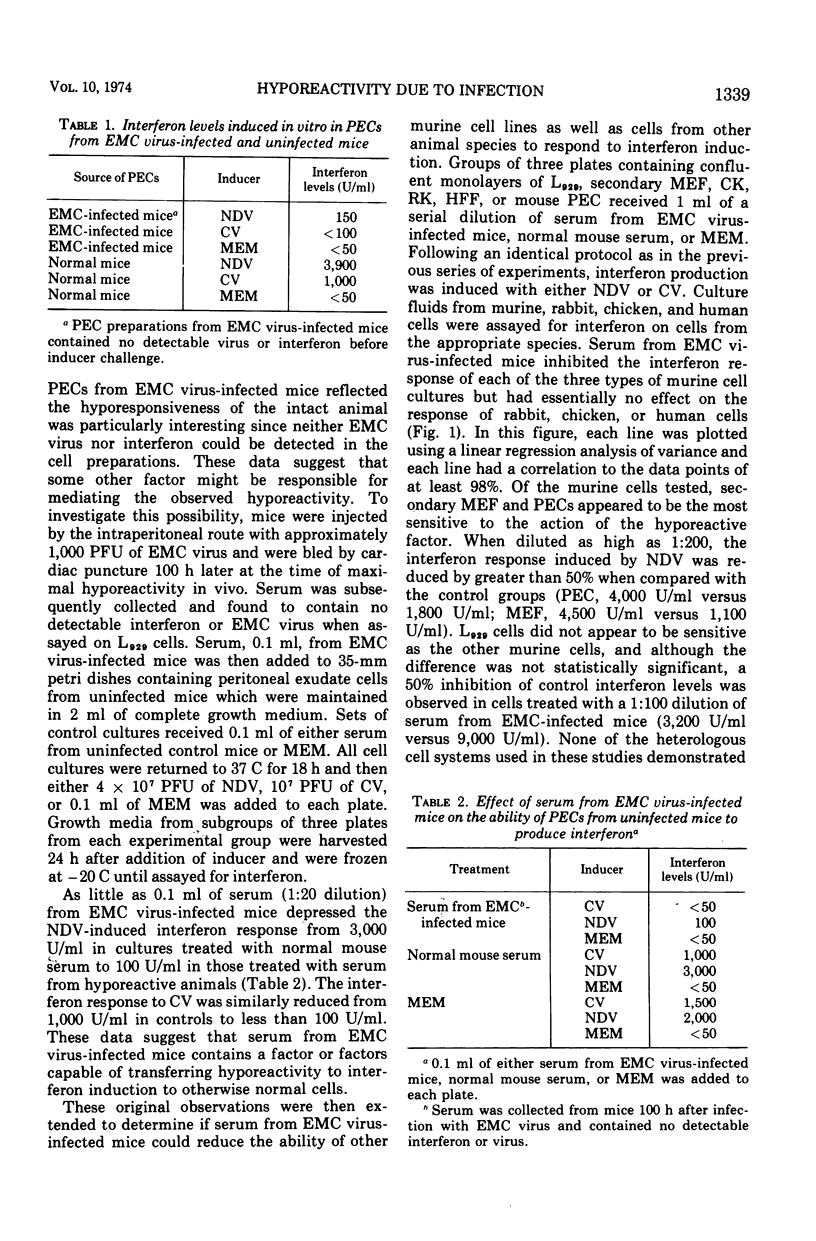
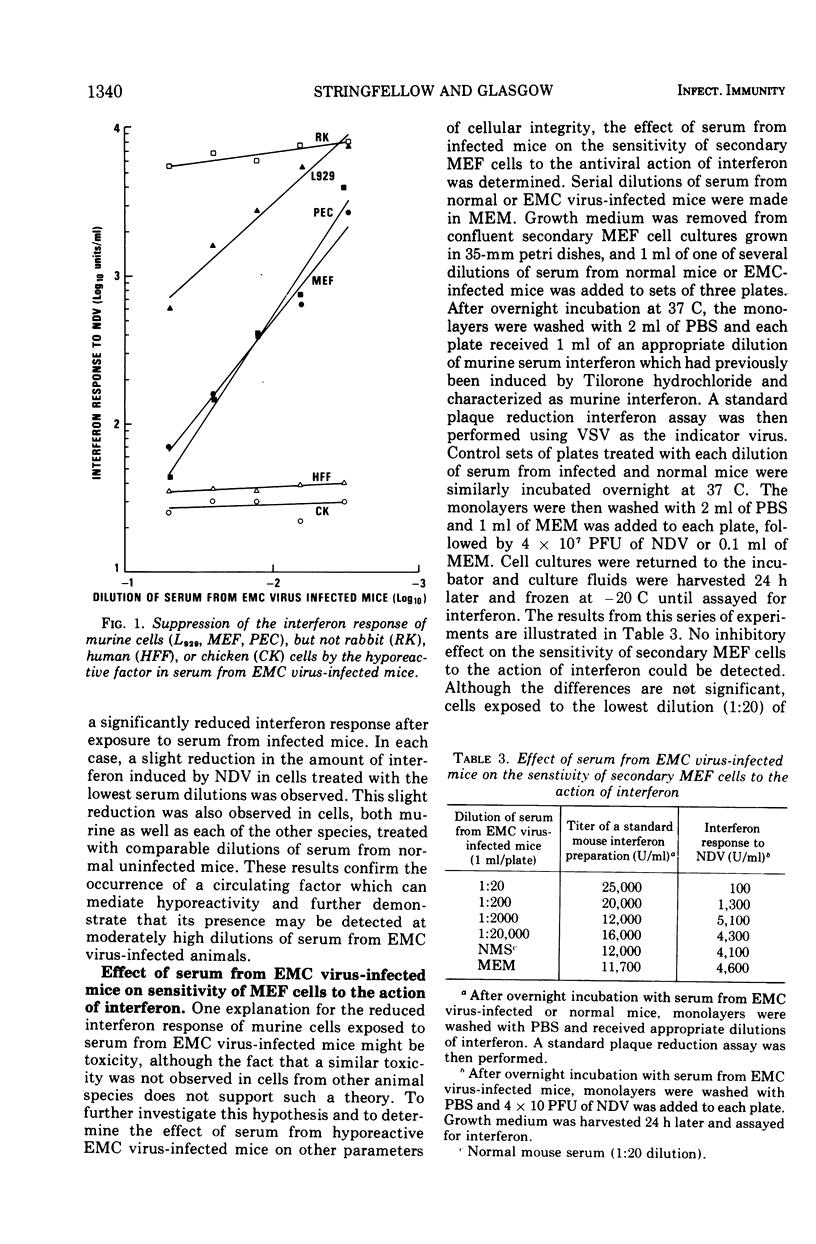
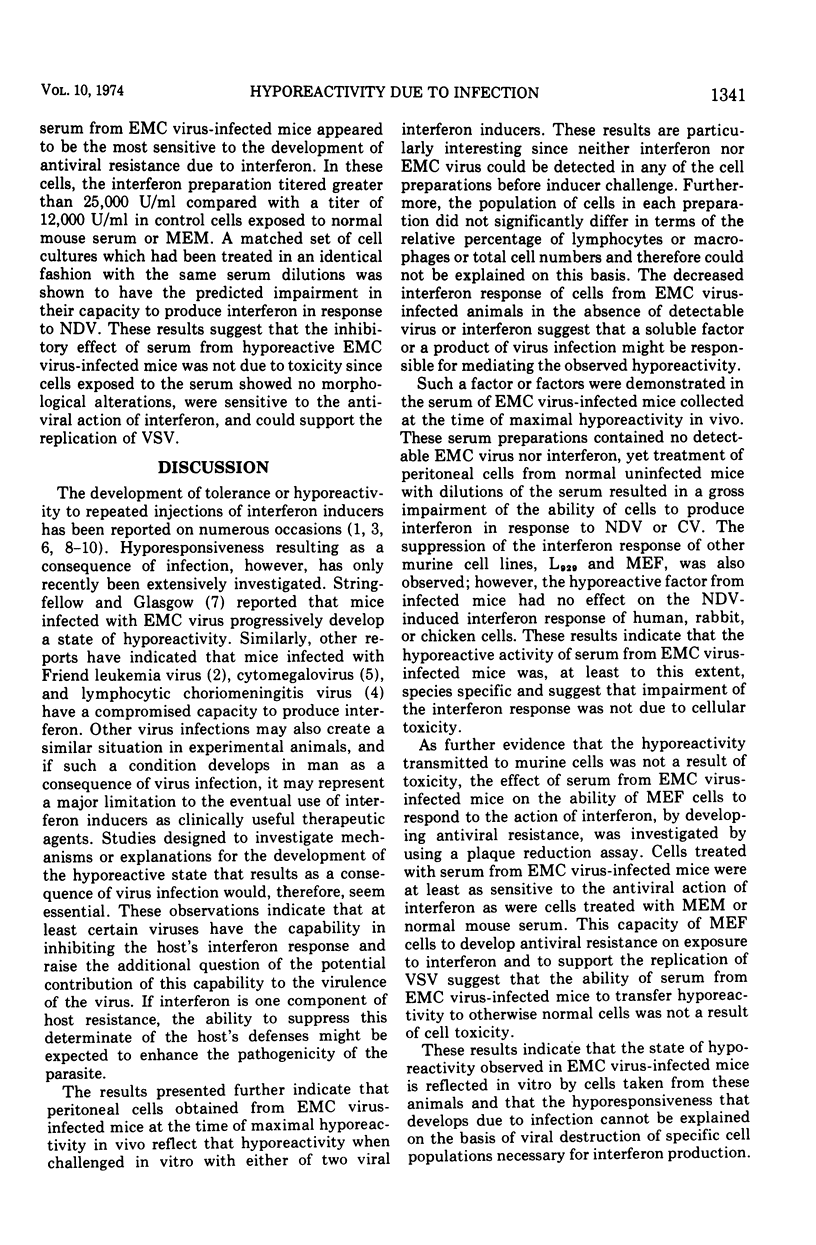
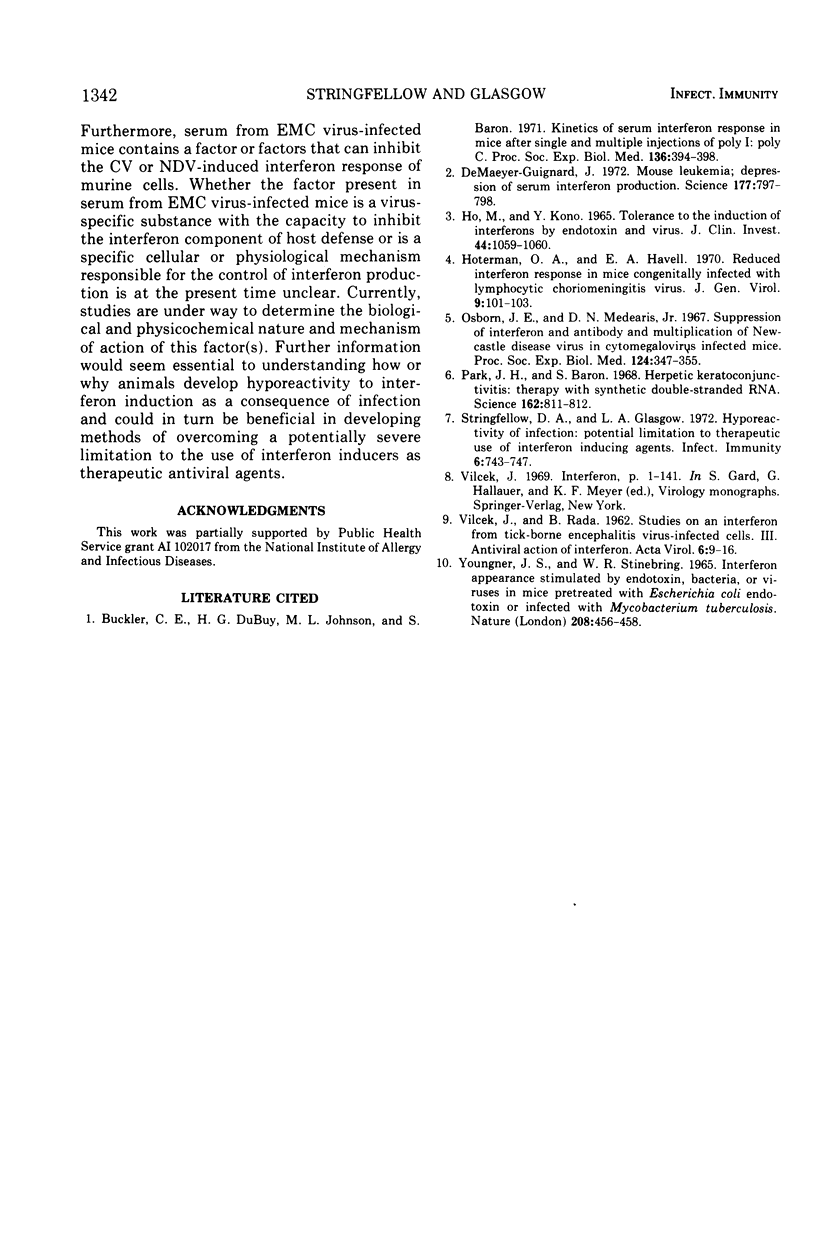
Selected References
These references are in PubMed. This may not be the complete list of references from this article.
- Buckler C. E., DuBuy H. G., Johnson M. L., Baron S. Kinetics of serum interferon response in mice after single and multiple injections of polyI-poly C. Proc Soc Exp Biol Med. 1971 Feb;136(2):394–398. doi: 10.3181/00379727-136-35272. [DOI] [PubMed] [Google Scholar]
- De Maeyer-Guignard J. Mouse leukemia: depression of serum interferon production. Science. 1972 Sep 1;177(4051):797–799. doi: 10.1126/science.177.4051.797. [DOI] [PubMed] [Google Scholar]
- Holtermann O. A., Havell E. A. Reduced interferon response in mice congenitally infected with lymphocytic choriomeningitis virus. J Gen Virol. 1970 Oct;9(1):101–103. doi: 10.1099/0022-1317-9-1-101. [DOI] [PubMed] [Google Scholar]
- Osborn J. E., Medearis D. N., Jr Suppression of interferon and antibody and multiplication of Newcastle disease virus in cytomegalovirus infected mice. Proc Soc Exp Biol Med. 1967 Feb;124(2):347–353. doi: 10.3181/00379727-124-31740. [DOI] [PubMed] [Google Scholar]
- Park J. H., Baron S. Herpetic keratoconjunctivitis: therapy with synthetic double-stranded RNA. Science. 1968 Nov 15;162(3855):811–813. doi: 10.1126/science.162.3855.811. [DOI] [PubMed] [Google Scholar]
- Stringfellow D. A., Glasgow L. A. Hyporeactivity of infection: potential limitation to therapeutic use of interferon-inducing agents. Infect Immun. 1972 Nov;6(5):743–747. doi: 10.1128/iai.6.5.743-747.1972. [DOI] [PMC free article] [PubMed] [Google Scholar]
- VILCEK J., RADA B. Studies on an interferon from tickborne encephalitis virus-infected cells (IF). III. Antiviral action of IF. Acta Virol. 1962 Jan;6:9–16. [PubMed] [Google Scholar]
- Youngner J. S., Stinebring W. R. Interferon appearance stimulated by endotoxin, bacteria, or viruses in mice pre-treated with Escherichia coli endotoxin or infected with Mycobacterium tuberculosis. Nature. 1965 Oct 30;208(5009):456–458. doi: 10.1038/208456a0. [DOI] [PubMed] [Google Scholar]


